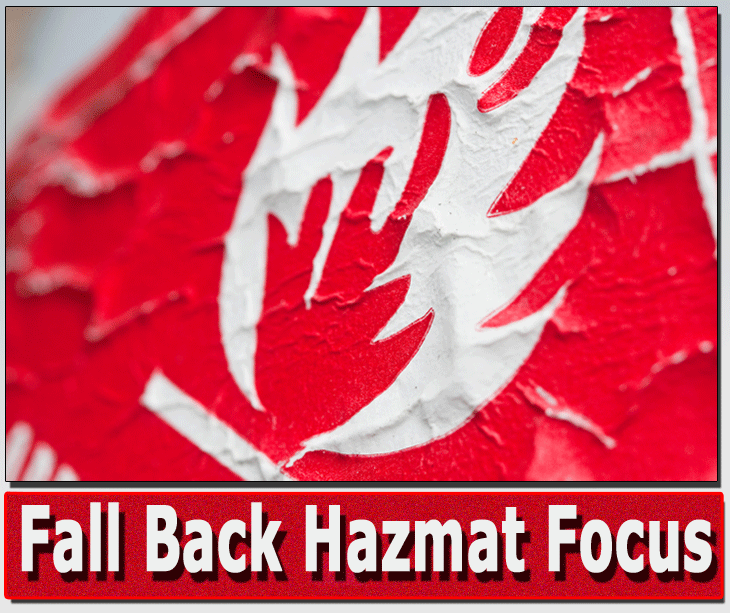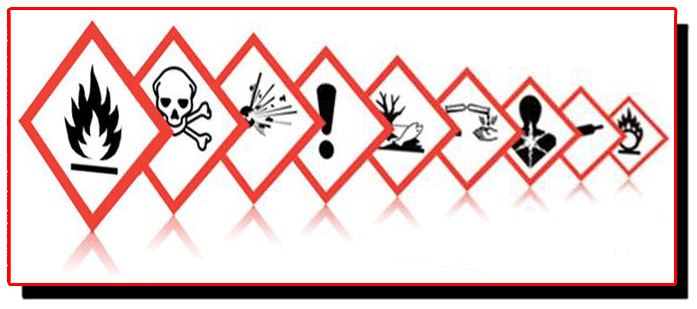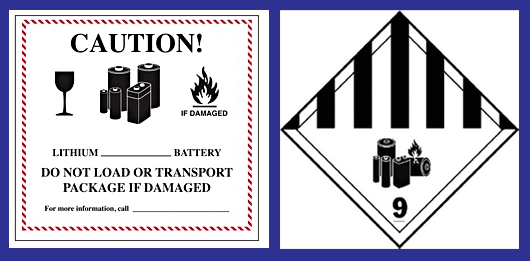
As autumn overtakes us
once again, FlyingTypers offers a look at what
some feel is a rather obscure part of the air transport
supply chain: the requirements applicable to the shipping
of Dangerous Goods (or hazardous materials, as the U.S.
regulatory framework 49CFR calls it), which can also
be described as “changing regulatory requirements,
2016-style.”
Up
First
Internationally, the transport of Dangerous Goods is
subject to the requirements of the ICAO Technical Instructions
for the Safe Transport of Dangerous Goods by Air; however,
in practice the “Dangerous Goods Regulations”
published by the airline interest group IATA are applied
by shippers, forwarders and airlines alike.
Since 2017 is also the
start of a new biennium, the changes in the upcoming
58th edition of the IATA DGR are both large-scaled and
substantial. Some of these changes certainly have the
potential to cause issues for those clinging to the
belief that “what has been will always be,”
so the sooner you familiarize yourself with the new
regulations, the smoother your hazmat business will
run in the new year just around the corner.
And no, this time the
focus of these substantial changes is not where you
might expect them—Lithium batteries.
This go-around for 2017
is a much more mundane and all-day commodity that might
cause some issues: UN 3166, commonly known as both vehicles
and engines, flammable liquid, flammable gas or fuel
cell powered in Class 9.
This UN number covers
(at least until December 31, 2016) any and all vehicles
or engines powered by any kind of flammable liquid,
including all devices or parts commonly installed in
such vehicles, engines or engine-powered equipment such
as lawnmowers, chainsaws, etc.
First,
The Good News
Since both ICAO and IATA seem to have anticipated—correctly—that
some stakeholders in the supply chain will struggle
with the new rules, a grace period is exceptionally
applied to the changed classification rules applicable
to engines and machinery until March 31, 2017.
So until slightly beyond
“The Ides Of March,” shippers can elect
to ship these commodities in compliance with the regulations
in force this year.
In essence, machinery,
apparatus, parts of such machinery that incorporate
any kind of internal combustion engine or such engine
shipped by itself must be classified in accordance with
the hazards present.
In other words, where
presently all machinery and engines—no matter
what kind of flammable liquid fuel or gas is used to
propel it—are assigned to class 9, the 2017-2018
ICAO TI and the 58th edition of the IATA DGR require
that engines and machinery powered by a flammable liquid
(which is, in accordance with the regulations, a liquid
exhibiting a flashpoint of 60 degrees Celsius/140 degrees
F or below) are assigned to Class 3 (flammable liquids).
Flammable, gas powered
engines will subsequently be assigned to division 2.1
(flammable gases).
A ship diesel intended
for use with heavy bunker fuel 8 (HFO 4 to 6) would
not fall into this classification, since HFO (Heavy
Fuel Oil) typically has a flashpoint in excess of 66
degrees C (about 151 degrees F) and remains assigned
to class 9.
Theoretically, since
combustible liquids (FP more than 60 but not more than
93 degrees C) under 49 CFR are not subject to any further
requirements when shipped in non-bulk packagings or
being residually incorporated into machinery, it might
be possible to ship such HFO engine as non-dangerous.
Since such engines also
often incorporate other dangerous items, it is imperative
that a trained person perform a thorough investigation
into whether or not an engine must be consigned as a
hazardous material or not.
Most shippers, when
confronted with the new requirements applicable in 2017,
might quote Star Trek’s Commander Spock,
declaring the rules “highly illogical.”
Nothing could be further
from the truth. The new requirements make perfect sense
when seen in the context of the UN Model regulations
(which have formally moved to their 19th edition for
the upcoming 2017-2018 biennium) and the commendable
work of the UN WP 15 to make the regulations—and
what’s more, the underlying rules—more consistent
and thus more comprehensive.
Comprehend
This
As always, understanding will require a bit of reading
into the regulations and probably a bit more background
explanation from the side of hazmat trainers.
The classification of
any article, gadget, device, or machinery should simply
be based on the dangers exhibited by the article or
machinery, unless there is clear evidence that further
factors need to be taken into consideration.
It is not a coincidence
that both ICAO and IATA have called on all stakeholders
to comment and provide feedback on the drafted requirements
applicable to what is called “competency based
training” and presumably mandated effective by
2019.
Such clear evidence
is present when it comes to the shipping of complete
vehicles. While a gasoline-powered engine would have
to be shipped assigned to Class 3, a complete vehicle
such as a motorbike or passenger car remains assigned
to Class 9. This also acknowledges the simple fact that
such commodities are daily business in air transport
and known to present a fairly low degree of danger—as
long as the applicable regulations, present or future,
have meticulously been enacted.
 |
What's
New?
There are a number of new and amended Special Provisions,
most of them detailing the new requirements applicable
to the classification of engines, apparatus, machinery,
and vehicles with internal combustion engines.
 For substances in division 4.1—which currently
cover flammable solids and self-reactive substances—a
third hazard emitter was added, the polymerizing substances.
For substances in division 4.1—which currently
cover flammable solids and self-reactive substances—a
third hazard emitter was added, the polymerizing substances.
As for Lithium batteries
both of the Lithium-metal (UN 3090) and Lithium-ion
(UN 3480) variety, not much is different.
Both remain forbidden
for transport aboard passenger aircraft when transported
as such (e.g. when not installed in or packed with equipment).
This situation will
prevail into the foreseeable future until protective
packagings are developed that demonstrate on the UN
level that the specific risks associated with shipping
Lithium batteries can be thoroughly and reliably mitigated
during the course of (air) transport.
However, the conditions
under which nation states may issue exemptions so that
batteries as such may be transported aboard passenger
aircraft have been clarified and updated for 2017.
An additional specimen
of the Class 9 label depicting burning batteries must
now be used with fully regulated Lithium batteries in
Class 9, whereas the Lithium battery handling label
has been replaced with, who would have guessed, a “Lithium
battery mark.”
No surprise for any
U.S. hazmat professional, since this change had already
been incorporated into the 49 CFR updated Nov. 1, 2015.
One
Thing Clear
It is certainly noteworthy that the vaguely-phrased
exemption in the current regulations for shippers of
so-called “small” lithium cells and batteries
from the requirement of mandatory Dangerous Goods Training
( which requires that staff involved in shipping such
“small” Lithium batteries must have “received
adequate instruction on the requirements commensurate
with their responsibilities”) now clearly spells
out what such “adequate instruction” entails.
Shippers making use
of this exemption would certainly be well advised to
update such instructions to their staff ahead of time.
Clear
Language
A fact about IATA less known is that their corporate
language is British English. In line with this, IATA
has redacted the regulations to reflect both consistency
and advanced grammar. For example, the word “marking,”
formerly commonly used throughout the regulations, has
been replaced by “mark,” since a self-adhesive
label with the shipper’s adress is a “mark”
for our British cousins whereas the act of applying
such mark to the package would be called “marking
it.”
(Insofar, IATA has certainly
impressed their mark not only on the regulations applicable
to the shipping of dangerous goods by air but all modes
of transport by propagating the pure and unadultered
Oxford Unabridged content.)
Jens |





 Vol.
15 No. 78
Vol.
15 No. 78